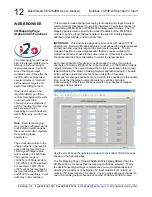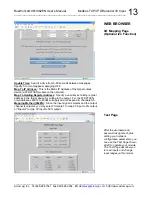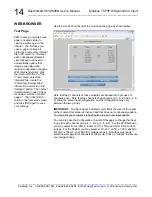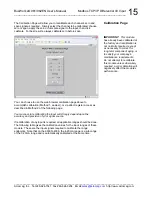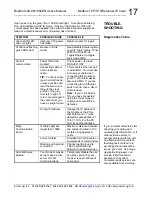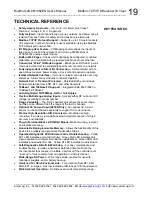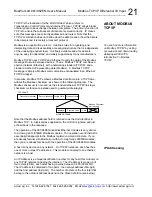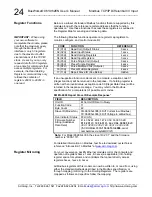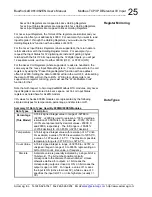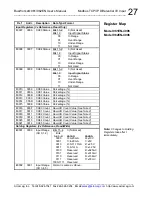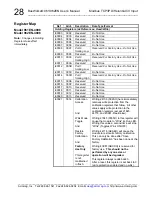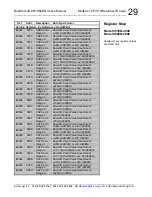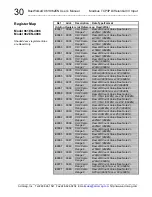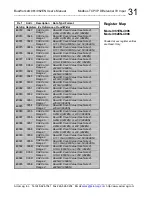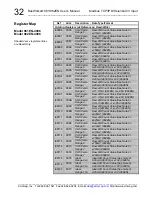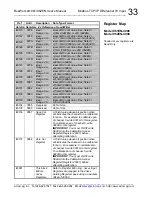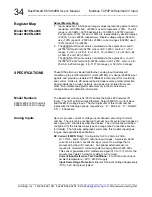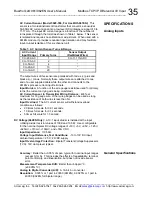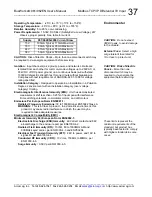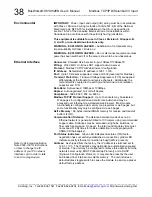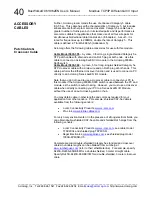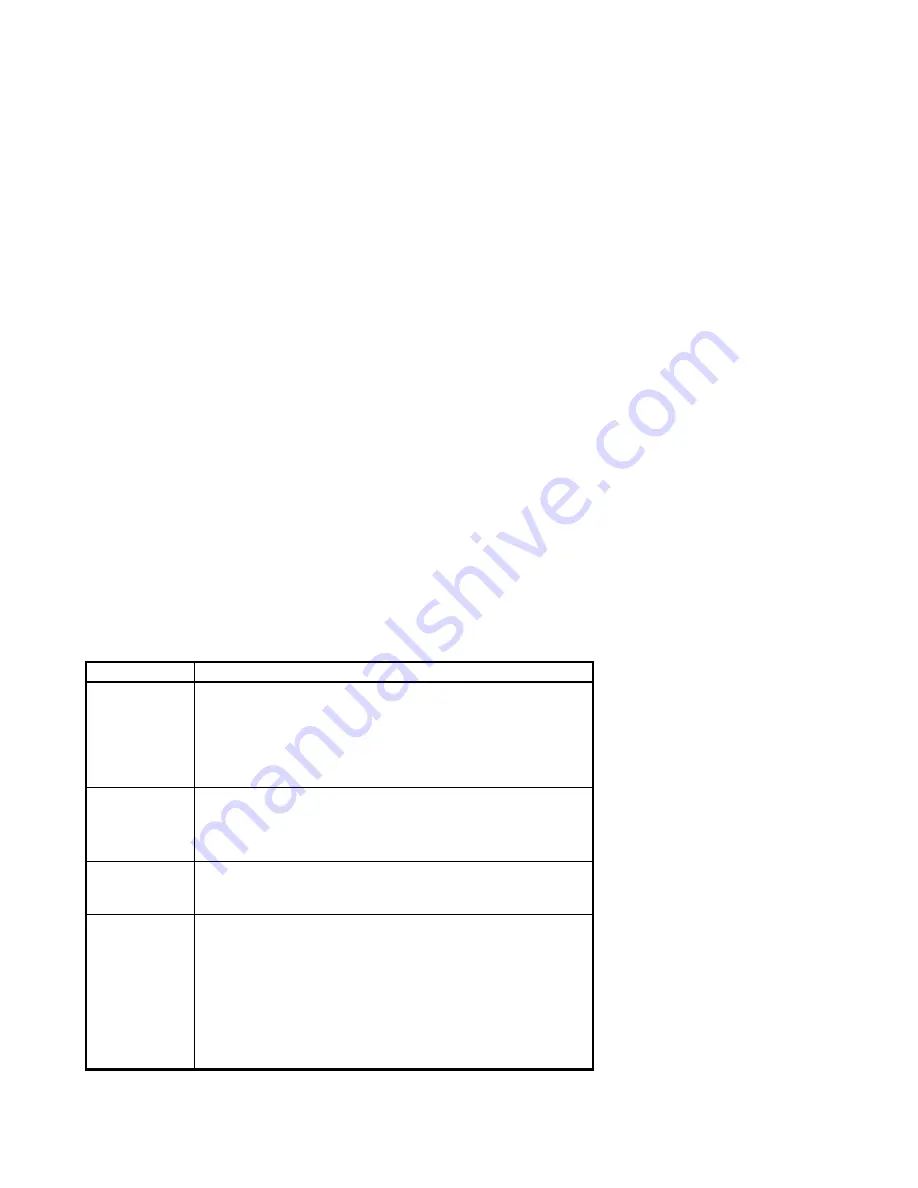
BusWorks® 961/962EN User’s Manual Modbus TCP/IP Differential I/V Input
___________________________________________________________________
_______________________________________________________________________________________
Acromag, Inc. Tel:248-624-1541 Fax:248-624-9234 Email:
sales@acromag.com
http://www.acromag.com
25
0xxxx Coil Registers are mapped to 42xxx Holding Registers
1xxxx Input Status Registers are mapped to 41xxx Holding Registers
3xxxx Input Registers are mapped to 43xxx Holding Registers
For 3xxxx Input Registers, the format of the registers are identical and you
only need to offset your address by 43000. For example: if you want to read
Input Register 1 through the Holding Registers, you would use the “Read
Holding Registers” function with an address of 43001.
For the 1xxxx Input Status Registers (where supported), the return data is
reformatted to match the Holding Register format. For example: if you
request the Input Status for 12 digital inputs, instead of getting 2 bytes
returned with the first 12 bits representing the 12 digital inputs, you will get
12 separate words, each set to either 0000H (OFF), or FFFFH (ON).
For the 0xxxx Coil Registers (where supported), reads are handled in the
same way as the 1xxxx Input Status Registers. You can also write to the coil
registers by using the “Preset Single Register” function with an address
offset of 42000. Setting the data to 0000H will turn the coil OFF, while setting
the data to FF00H will turn the coil ON. Writing to multiple coils is not
supported via register mirroring, you must use the “Write Multiple Coils”
function for that.
Note that with respect to Acromag 9xxMB Modbus RTU modules, only 3xxxx
Input Registers are mirrored into 4xxxx space, not Coil or Input Status
registers as noted here for 9xxEN models.
I/O values for Series 900EN modules are represented by the following
simple data types for temperature, percentage, and discrete on/off.
Summary Of Data Types Used By 900MB/900EN Modules
Data Types
Description
Percentage
(This Model)
A 16-bit signed integer value in range of -32768 to
+32767.
±
20000 is used to represent
±
100%, yielding a
resolution of 0.005%/lsb. For example, -100%, 0% and
+100% are represented by decimal values –20000, 0,
and 20000, respectively. The full range is –163.84%
(-32768 decimal) to +163.835% (+32767 decimal).
Temperature A 16-bit signed integer value with resolution of 0.1
°
C/lsb.
For example, a value of 12059 is equivalent to 1205.9
°
C,
a value of –187 equals –18.7
°
C. The maximum possible
temperature range is –3276.8
°
C to +3276.7
°
C.
Count Value
A 16-bit signed integer in range of -32768 to +32767, or
unsigned integer in range of 0 to 65535, representing an
A/D or DAC count, time value, or frequency.
Discrete
A discrete value is generally indicated by a single bit of a
16-bit word. The bit number/position typically
corresponds to the discrete channel number. Unless
otherwise defined for outputs, a 1 bit means the
corresponding output is closed or ON, a 0 bit means the
output is open or OFF. For inputs, a value of 1 means
the input is ON (Active low near 0V), while a value of 0
specifies the input is OFF or in its high state (usually >>
0V).
Register Mirroring
Data Types


